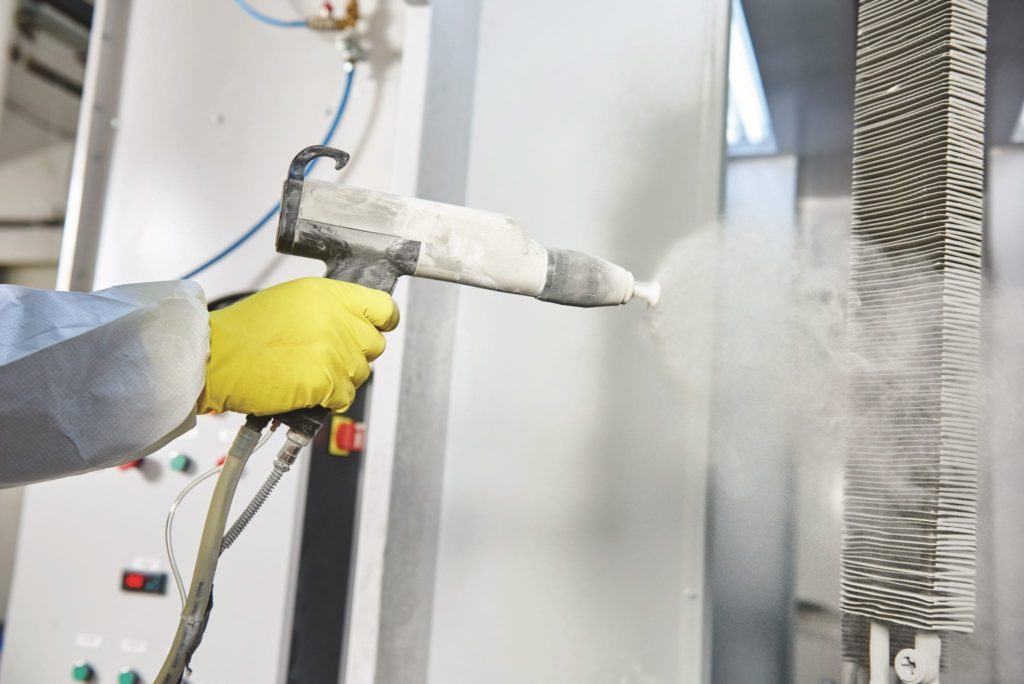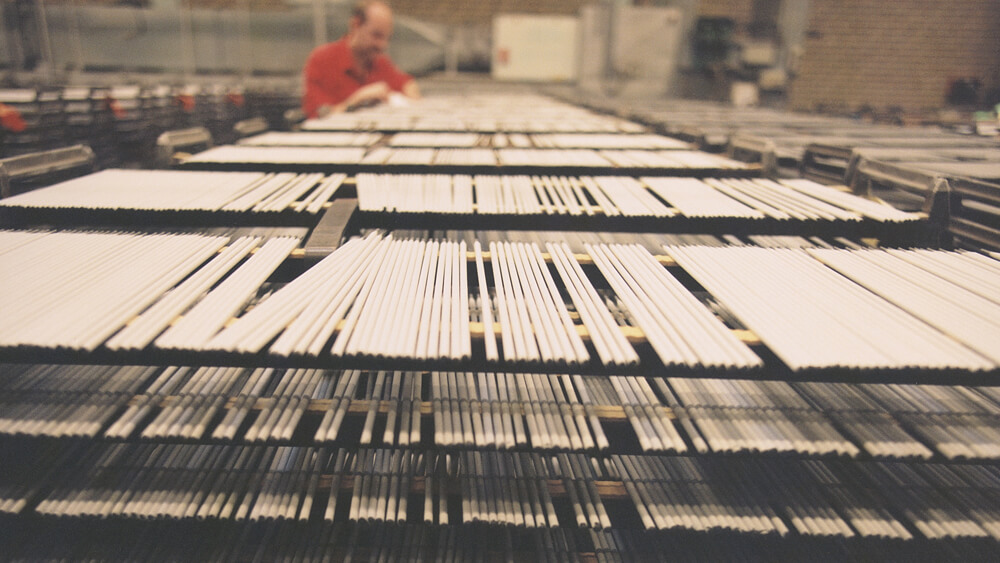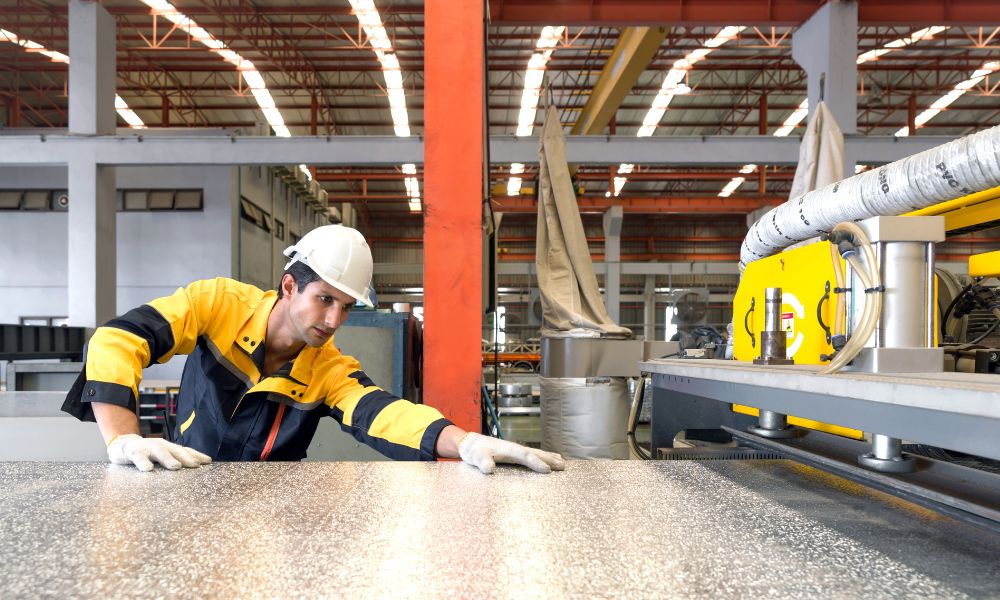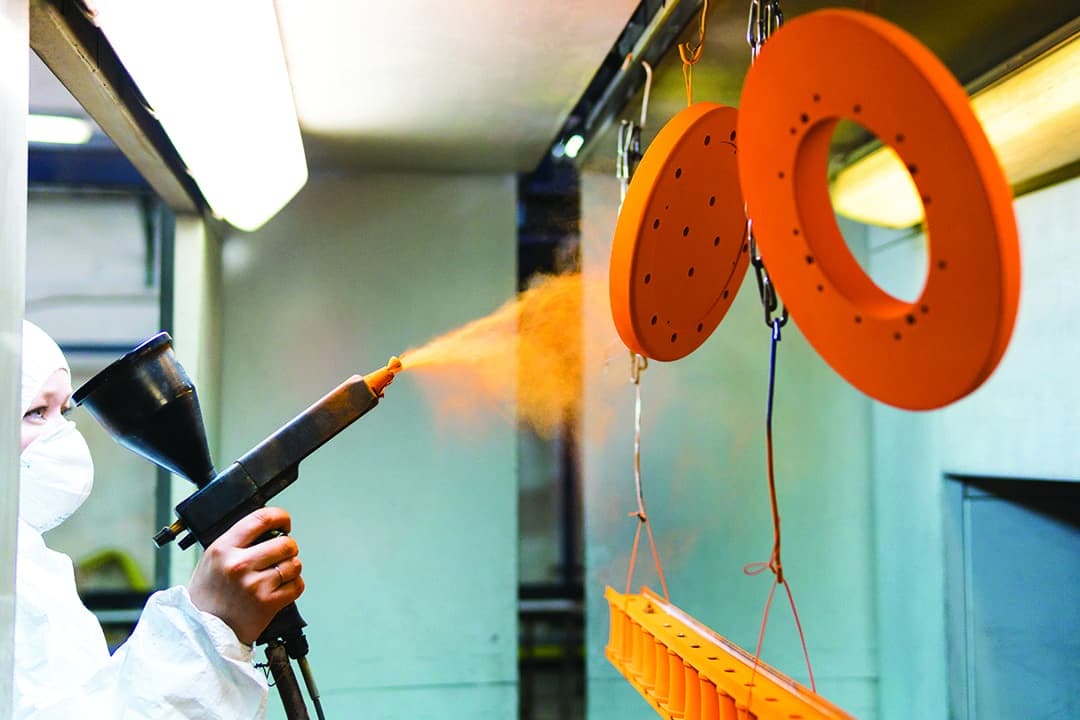Industrial painting is a complex yet essential process that involves the use of protective coating systems. It is an intricate network of layers designed to protect from factors such as corrosion, weathering, and abrasion.
With the right products and techniques, industrial coatings can offer long-term durability for any environment or application. This guide will serve as your go-to resource for understanding how these systems work and where they are best applied.
Learn about the various surface preparation methods used in industrial painting projects, what types of coatings are available, and how to select the right system for your specific needs. Discover why industrial painting matters now more than ever before!
Types of Industrial Painting and Coatings

Industrial painting and coatings are used to provide protective finishes for surfaces in a variety of industrial settings. Different types of coating systems can be applied depending on the environment, material, and desired outcome.
Commonly applied industrial paint and coatings include epoxies, polyurethanes, alkyds, acrylics, chlorinated rubber paints, PVC-based coatings, and vinyl ester resins. Epoxy coatings are one of the most popular due to their durability in high-temperature environments; they can also offer superior chemical resistance which makes them ideal for many different applications.
Polyurethane coatings offer excellent weatherability as well as good abrasion resistance while still allowing flexibility when needed. Alkyd paints provide an economical solution that is resistant to chemicals but may require more frequent recoating than other types of paint systems.
Acrylics have low odor properties making them suitable for indoor use while offering excellent color retention over time. Chlorinated rubber paints are often used on steel or concrete surfaces because they form a tough film that resists moisture and extreme temperatures better than other types of paints; however, it does not hold up well against UV exposure so must be reapplied regularly if exposed outdoors for long periods. PVC-based coatings provide good corrosion protection with added tensile strength while being relatively easy to apply compared to other options available on the market today; additionally, it has been found to work well with certain substrates such as wood or metal alloys without deteriorating quickly under harsh conditions like water immersion or extreme temperatures.
Vinyl ester resin is another popular option due to its waterproofing abilities coupled with its ability to resist corrosion caused by acids or alkalis making it ideal for underwater structures needing additional protection from the elements outside their environment such as boats and buoys in marinas or vessels traveling across open seas alike. No matter what type you choose each type offers unique advantages along with some drawbacks so make sure you read up on each system before deciding which one best suits your needs!
Preparation for Applying Paint or Coating

Preparing a surface for paint or coating is an essential step in any industrial protective coating system. Before beginning the process, it’s important to ensure that all dirt, dust, and debris have been properly removed from the surface.
This can be done through cleaning methods such as power washing, sandblasting, or chemical washing. Once the area has been cleaned, it should then be inspected and repaired if necessary.
After this is completed, proper primers and sealants should be applied before applying the protective coating of choice. This ensures maximum adhesion between surfaces for long-lasting protection against corrosion and other damaging elements.
Tips and Techniques for Successful Results

When it comes to industrial painting, success relies on the tips and techniques used. It is important to understand which protective coating systems are best suited for a desired application to achieve successful results.
To start, one must choose the right type of paint for their project – an oil-based or water-based paint may be more suitable depending on what surface needs protection from harsh elements such as corrosion or extreme temperatures. Furthermore, proper preparation of surfaces before painting is also paramount; cleaning and sanding down metal surfaces before applying your chosen coatings will ensure the most effective result with longevity. Additionally, choosing a high-quality primer can help increase adhesion between layers while reducing bleeding through any imperfections in the base material.
Lastly, using spray guns instead of brushes can often provide smoother coverage and faster drying times so you don’t have to wait long before adding additional coats or even topcoats! With these tips and techniques in mind, you should be well-equipped to achieve successful results when tackling your next industrial painting project!
The Benefits of Using Protective Coatings in Industrial Settings

Using protective coatings in industrial settings can be highly beneficial, both for the safety of workers and the efficiency of operations. Protective coatings are designed to protect surfaces from corrosion, wear, and other forms of physical damage.
In addition, they can also provide an extra layer of insulation against extreme temperatures or harsh environments. Protective coatings offer a range of advantages that businesses should consider when choosing their industrial painting solutions.
For one thing, these coatings extend the life span of equipment by protecting it from weathering and other environmental factors such as rust or chemical attack. Furthermore, they reduce maintenance costs since they minimize the need for regular repairs or replacements due to scratches or abrasions on the surface area over time.
Additionally, some protective coating systems have anti-fouling properties that resist algae buildup on boats and ships used in marine industries. Finally, protective coatings are often applied with specialized equipment which adds an extra layer of protection against fire hazards – something especially important when working in hazardous conditions involving flammable materials or combustibles like oil rigs and power plants.
By reducing risks associated with fires caused by sparks coming into contact with unprotected surfaces these types of applications become much safer to work around due to increased protection provided by specialized coatings systems used during application processes.
Conclusion

Industrial painting is a critical component of many businesses, and protective coating systems are essential for ensuring the longevity of these projects. Industrial painters must have the necessary knowledge to select the right type of coating system that will provide maximum protection for their client’s projects. This guide offered crucial insight into industrial painting and protective coating systems, giving readers an understanding of what types of coatings are best suited for different environments and materials.
It also provided helpful tips on how to apply coatings properly, as well as safety information regarding working with hazardous chemicals or volatile substances. With this guidance in hand, industrial painters can confidently take on any project knowing they have all the tools needed for success!